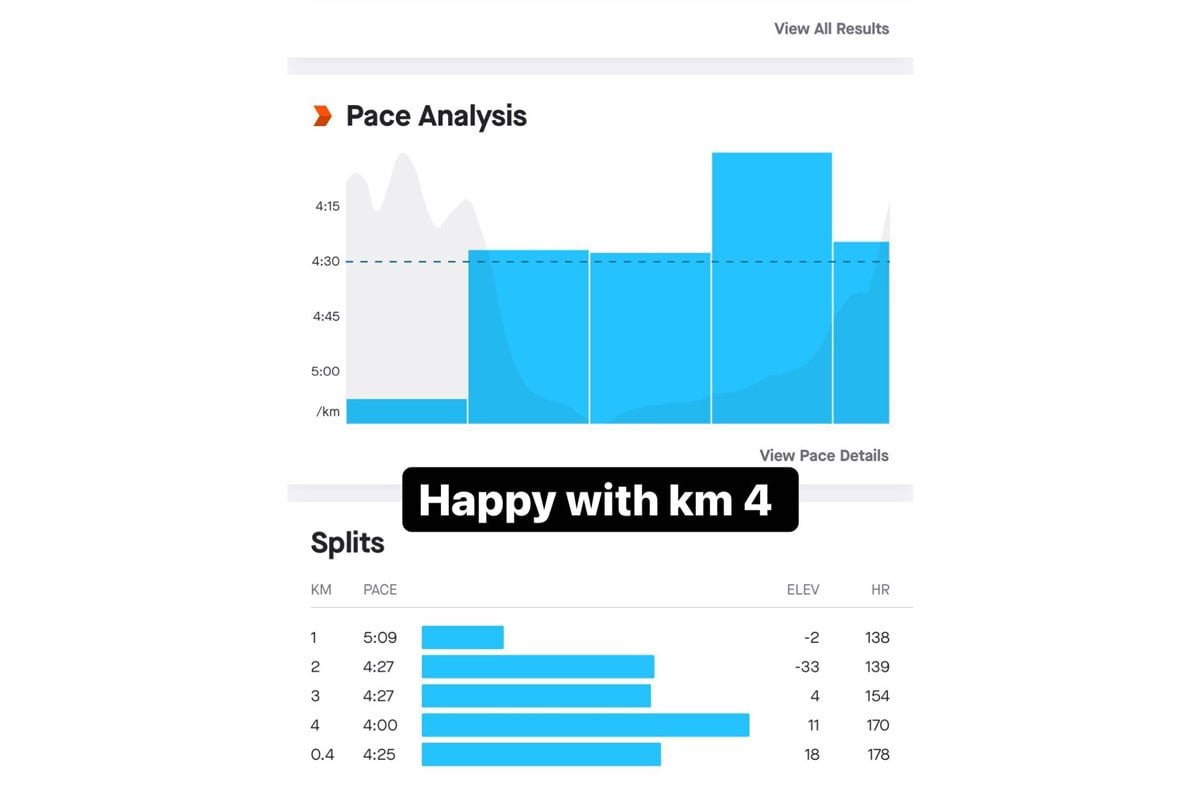Harry Garside has never been one to shy away from a challenge, whether it’s training-related or challenging gender stereotypes. But, his latest training challenge is one that really isn’t for the faint-hearted.
Taking to his Instagram Stories, Harry Garside told his followers he was about to start a “24 hours breathing through my nose challenge.” This required him to place tape over his mouth to force it shut, so that he only took breaths through his nose.
WATCH: Harry Garside’s 24-Hour Tape Challenge
Not only this, but in taping up his mouth, Harry also said “in that time I’ll also not be talking, I’m going to fast as well. The only thing I will be doing is drinking as I usually drink four to five litres of water a day, so I’ll just be drinking through a straw.”
You might be thinking, “Harry, this sounds like an absolutely crazy thing to do!” and we’d agree. But for the Australian boxer, it’s not the first time he’s attempted such a feat. He also told his followers he has previously gone without talking for “50 hours,” adding, “that was a hard thing for me to do because, for me, it felt like I wasn’t able to express myself, I felt really uptight.”
Harry didn’t fully reveal his reasoning for taking up the challenge, but in some follow-up Story posts, he recorded himself running and breathing heavily through his nose. In another video, posted after just 20-minutes of running, Harry’s intense breaths and moans indicate it’s even harder than it looks to be forced to breathe through just your nose when exercising.
Harry also shared his pace analysis from his 4km run, which included his heart rate over each kilometre. It increased from 138bpm in the first kilometre to 178bpm. According to Livestrong (which cites the American Heart Association), while the “average heart rate when running will vary from person to person, it usually fluctuates between 80 and 170bpm.”
This falls in line with Harry’s 178 maximum, but for the first kilometre to immediately spike to 138bpm suggests that breathing through just your nose can affect your body and your heart’s ability to pump oxygen when it’s needed. It’s with this in mind that we’d strongly recommend speaking with a health professional before trying this challenge yourself.

But, Harry wasn’t done there. In an attempt to push his body even further, he then stepped inside a cryo chamber with a temperature of -110 degrees, still with tape over his mouth. Adding in the caption it was “f**king hard,” Harry also appeared to really struggle with not talking to express how uncomfortable being inside the cryo chamber would have been.
In a final video, after taking the tape off his mouth, Harry gave a debrief of his experience.
He said, “The first hour was really difficult just getting used to it. I really felt I was going to suffocate a little bit. It felt a little bit like hyperventilating, I had to lie down and I found myself feeling really tired. I slept really well, and did wake up with a dry mouth so I think I might have breathed through my mouth a little bit.”
“The cold shower in the morning was hard and the -110 was hard, going for a run was difficult. The most difficult thing was not talking. I found it really hard to express myself and I felt some congestion in my neck. So when I was able to take [the tape] off just being able to talk felt so much better.”
Benefits of putting tape over your mouth when exercising
We’ve previously discussed putting tape over your mouth but in relation to sleep. Using Commando Steve as our source, we found that nasal breathing has numerous benefits, including giving our body an increased supply of nitric oxide.
However, this benefit occurs more greatly when you breathe slowly through your nose, as “breathing heavy causes blood vessels to constrict.”
With regards to exercising, The Washington Post cites a 2018 study that looked into the effects of nasal breathing on male and female runners. The claims relating to nitric oxide intake our brought into conversation again, too.
“Nasal breathing allows for more oxygen to get to active tissues. This is because breathing through your nose releases nitric oxide, which is necessary to increase carbon dioxide in the blood, which, in turn, is what releases oxygen.”
Nasal breathing vs mouth breathing
“Mouth breathing does not effectively release nitric oxide, which means the cells are not getting as much oxygen as through nasal breathing, which could lead to fatigue and stress,” The Washington Post relates.
The study quoted looked at the effects of oxygen intake in male and female runners after running breathing just through their nose and just through their mouth.
“Their maximum rate of oxygen consumption did not change from nasal to mouth breathing. But the study found that the runners’ respiratory rate, breaths per minute, and ratio of oxygen intake to carbon dioxide output decreased during nasal breathing.”
“The researchers said this is probably because of the lower breath rate used during nasal breathing, which allows more time for oxygen to get into the bloodstream.”
When you’re out running, you will likely take short, fast breaths through your mouth. It’s incredibly common and while you may think it helps, it doesn’t provide much benefit.
The Washington Post says doing this, “causes the body to offload more CO2, making it harder to oxygenate our cells. In intense moments, nasal breathing is the ideal way to oxygenate our systems.”
It is possible to try nasal breathing for yourself, although as we mentioned earlier, it’s always good to consult with a health professional first, especially if you’re going to implement it for longer runs. But, next time you are running and you notice your breath getting shorter, try and force yourself to use just your nose and see what effect it has.
Read Next
